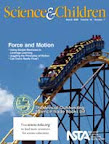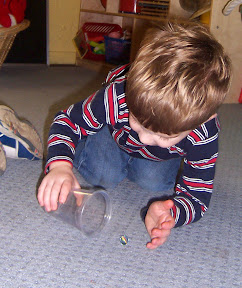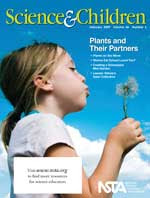By MsMentorAdmin
Posted on 2009-02-25
We are opening a new academy for grades 10, 11, and 12. We’re going to have a science lab for combined use in biology, chemistry, and physics. I’ve taught in labs, but I’ve never designed one. Where do we start?
—K. D., Oklahoma
There’s nothing more exciting for a science teacher than walking into a new laboratory. The first thing we notice is the equipment. But there’s a lot more to designing a lab than selecting and installing the tables.
Whether you’re constructing a new facility or remodeling an existing one, planning the lab facilities is a complicated process. It’s better to work out all the details in advance than have to go back and correct any mistakes or omissions. I would strongly recommend that you start with the NSTA Guide to Planning School Science Facilities, available through the NSTA Science Store. This publication has a chapter on safety guidelines (including storage of materials), sample floor plans, Americans with Disabilities Act (ADA) guidelines, and even suggestions for “green” labs. It has user-friendly chapters on the steps of this planning process, lots of photographs, and checklists. It also is essential you research recommendations or requirements from your state department of education and your local building codes.
I assume you are going to meet with all of the science teachers for their input. Ask a lot of questions: What kind of science instruction would take place in the lab: lecture/discussion with supporting lab activities vs. an inquiry-based curriculum with ongoing activities? How many students will be in a class? What kinds of investigative processes are suggested or required in your state’s science standards? What will be the role of technology? The NSTA Guide has many discussion-starters.
The first priority should be safety: features such as showers, eyewash stations, fume hoods, air exchangers, fire extinguishers and blankets, sanitizing equipment for goggles, master shut-off switches (for gas, water, electric), adequate and uncluttered workspace dimensions, room size, and unobstructed exits from the lab. The NSTA Guide explores what should be in place so that students and teachers can work safely. The Council of State Science Supervisors also has recommendations in their publication, Science Safety: Making the Connection.
I talked to several other science teachers who suggested:
Include more storage space than you think you’ll need, especially if the lab is used for more than one subject.
If several teachers share the lab, include some adjoining office space for teachers to work and store teaching materials.
In addition to the lab stations, get flat-top student desks or tables that can be pushed together for cooperative work.
It is impossible to have too many electrical outlets or dataports (if you’re not wireless).
Include a large wall area for a white board—preferably an interactive one—or at least a
Visit other schools to see their facilities. Try to go during the day when students are there.
Be sure to budget annually for repairs, upgrades, or replacement items. Include training costs in your budget.
Train all science staff in safe laboratory procedures and handling of materials. Revisit safety procedures annually, or more frequently if needed.
Include administrators in any discussion of safety issues or other concerns.
If anyone has other suggestions for K.D., please feel free to add a comment!



 In last month’s issue of
In last month’s issue of 
 I recently received the first seed catalog in the mail. For those of us in the northern states, seeing the pictures of flowering plants is a harbinger of spring! In the same delivery was this issue of S&C, themed around plants. A coincidence?
I recently received the first seed catalog in the mail. For those of us in the northern states, seeing the pictures of flowering plants is a harbinger of spring! In the same delivery was this issue of S&C, themed around plants. A coincidence? There are a few things you should do before you go:
There are a few things you should do before you go:






 Planting peas on President’s Day has been the first item on my planting list for many years, and is the topic of the Early Years column in the February 2009 issue of
Planting peas on President’s Day has been the first item on my planting list for many years, and is the topic of the Early Years column in the February 2009 issue of